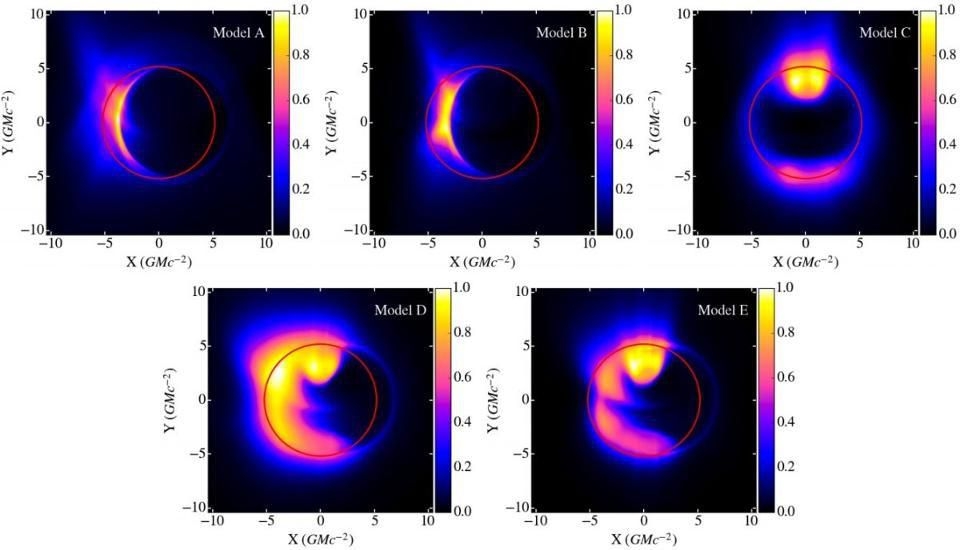This Is How We Will Successfully Image A Black Hole's Event Horizon

Five different simulations in general relativity, using a magnetohydrodynamic model of the black hole's accretion disk, and how the radio signal will look as a result. Note the clear signature of the event horizon in all the expected results.GRMHD SIMULATIONS OF VISIBILITY AMPLITUDE VARIABILITY FOR EVENT HORIZON TELESCOPE IMAGES OF SGR A*, L. MEDEIROS ET AL., ARXIV:1601.06799
Oct 3, 2018
Ethan Siegel & Starts With A Bang
What does a black hole actually look like? For generations, scientists argued over whether black holes actually existed or not. Sure, there were mathematical solutions in General Relativity that indicated they were possible, but not every mathematical solution corresponds to our physical reality. It took observational evidence to settle that issue.
Owing to matter orbiting and infalling around black holes, both stellar-mass versions and the supermassive versions, we've detected the X-ray emissions characteristic of their existences. We found and measured the motions of individual stars that orbit suspected black holes, confirming the existence of massive objects at the centers of galaxies. If only we could directly image these objects that emit no light themselves, right? Amazingly, that time is here.
See full text